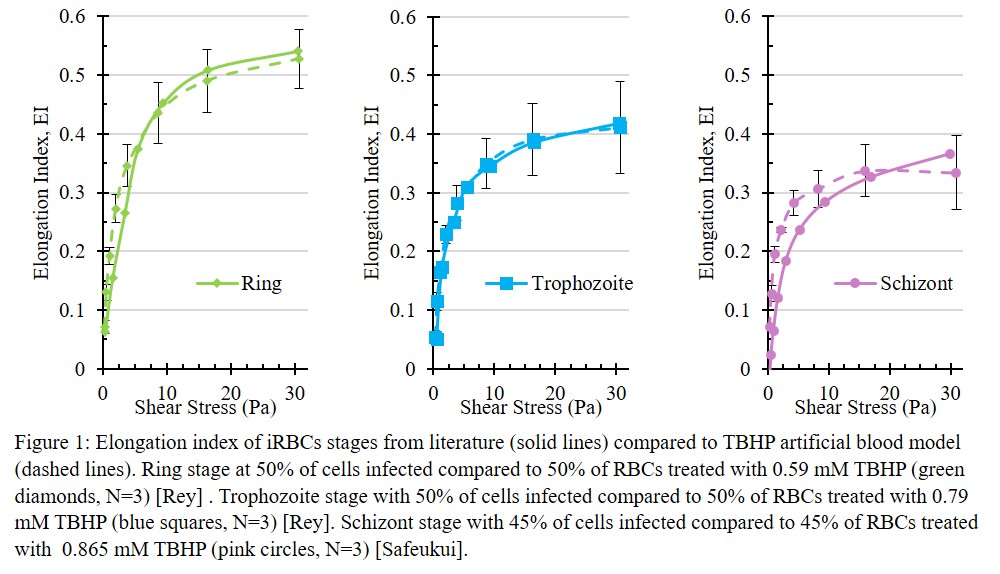Breadcrumb
- Home
- Publications
- Proceedings
- 2023 AIChE Annual Meeting
- Engineering Sciences and Fundamentals
- Characterization of Biomaterials and Biological Systems
- (218i) Modelling Malaria Rigidity Effects on Margination and WBC Adhesion

Methods: Blood draw protocols have been approved by the University of Michigan Internal Review Board (IRB-MED). RBCs were separated from whole blood samples using centrifugation with the plasma and white blood cells stored separately. Model infected red blood were made from healthy RBC samples via exposure to tert-butyl hydroperoxide in a concentration dependent manner for rigidification as needed. RBC rigidity was confirmed using ektacytometry. Samples of rigid RBCs, healthy RBCs, and plasma with WBCs were reconstituted to match fractions associated hospitalization. A confluent layer of HUVEC was allowed to grow on coverslips and inflamed 4 hours prior to use. Flow experiments were completed in a parallel flow plate chamber at 250 s-1, 500 s-1, and 1000s-1 to mimic shear conditions throughout the body. Radial distribution was found using confocal microscopy with a fraction of each cell type being fluorescently labelled. WBC adhesion was imaged using light microscopy flowing a flow experiment.
Result and Conclusions: This work quantifies concentrations of tert-butyl hydroperoxide that can be used to model the rigidity of the ring stage, trophozoite stage, and schizont stage of Plasmodium Falciparum, Figure 1. Samples of reconstituted whole blood containing specific concentrations of each stage were produced and can be easily altered to match disease conditions. The presence of rigid cells disrupts the cell free layer resulting in reduced WBC adhesion. Rigidity induced by malarial infection plays a role in the disruption of hemodynamic equilibrium throughout the vasculature. Further investigations can be made into disrupting the margination patterns of malaria infected cells and adding further modifications to the model cells to better match the surface chemistry of real patient cells.